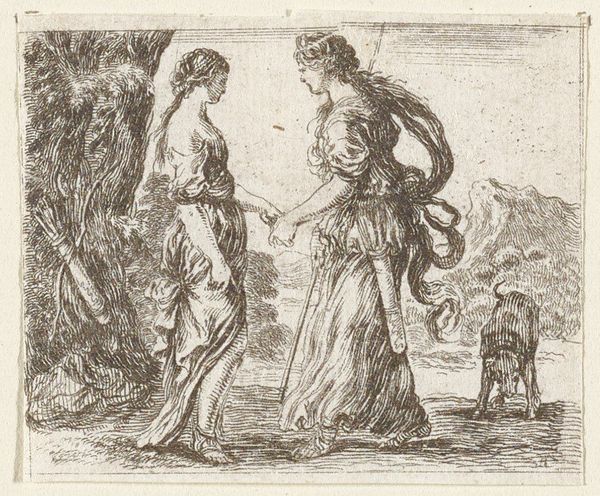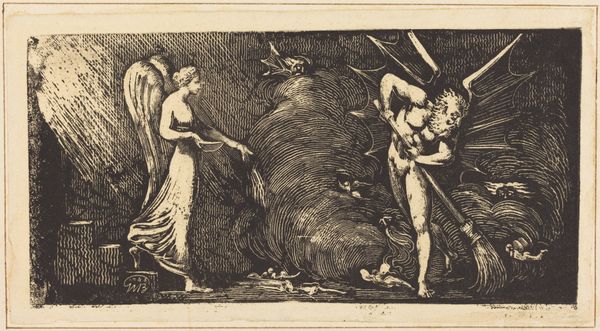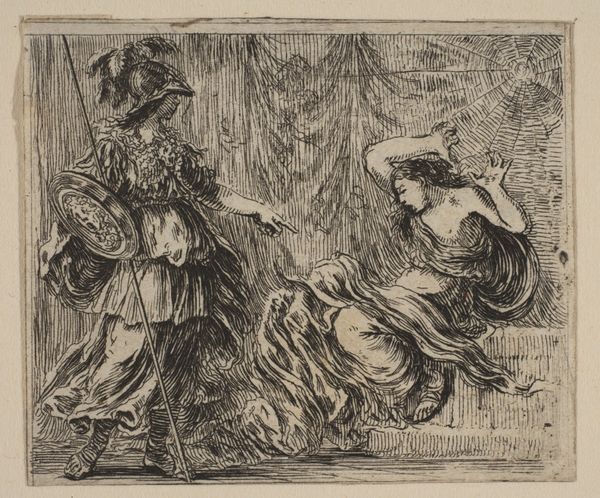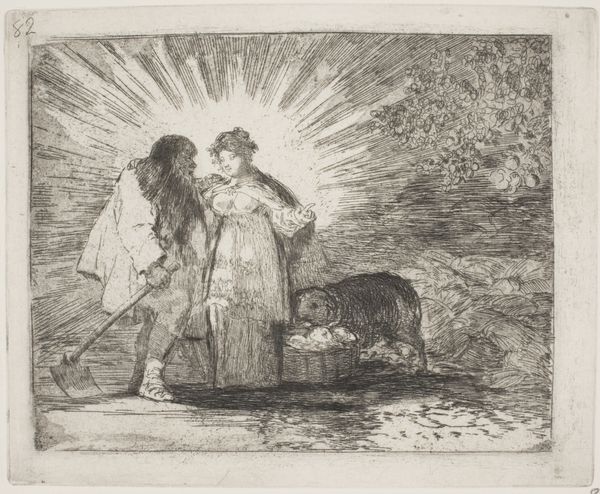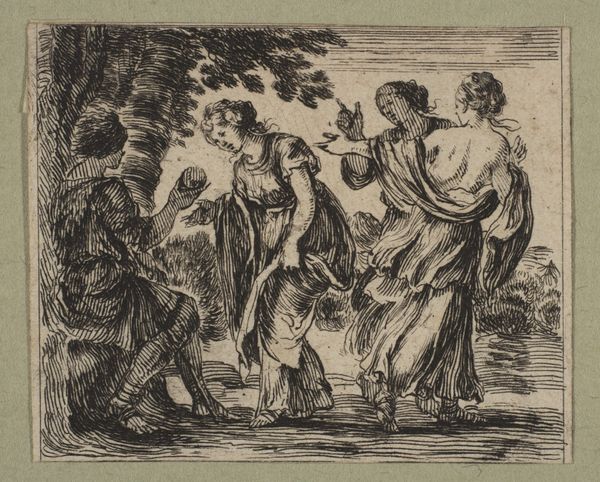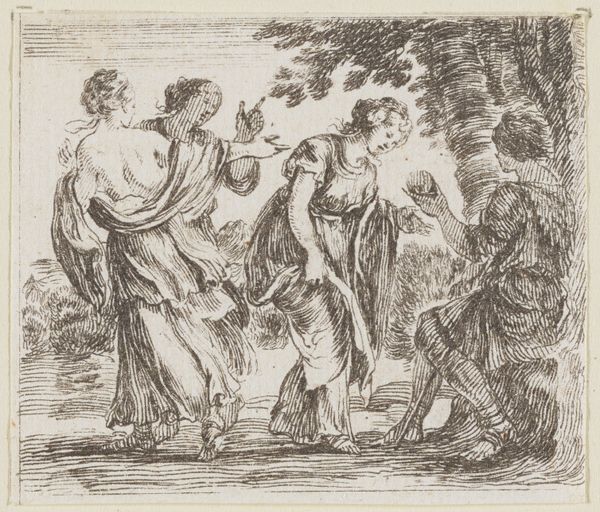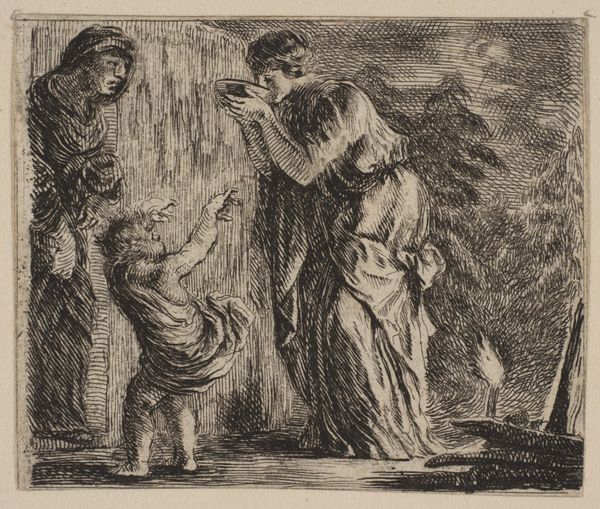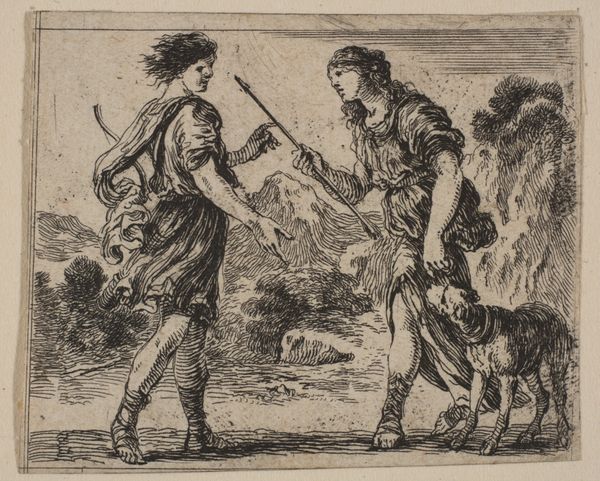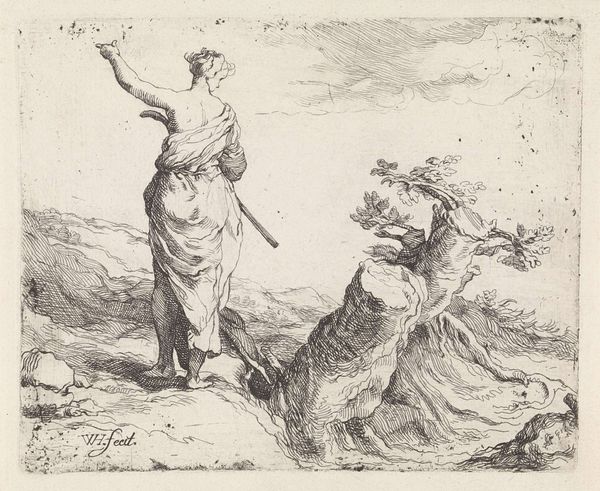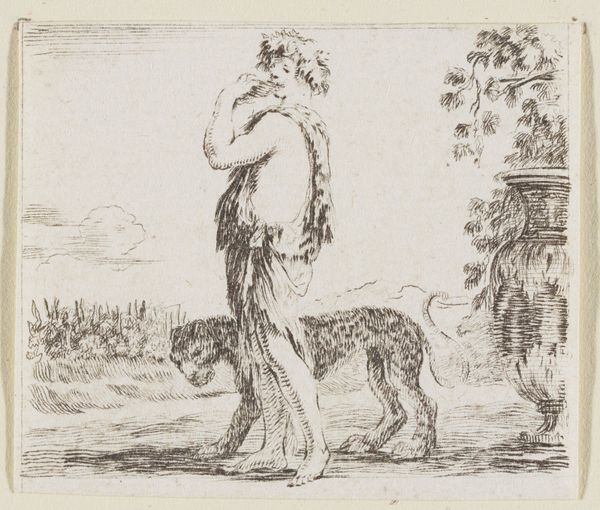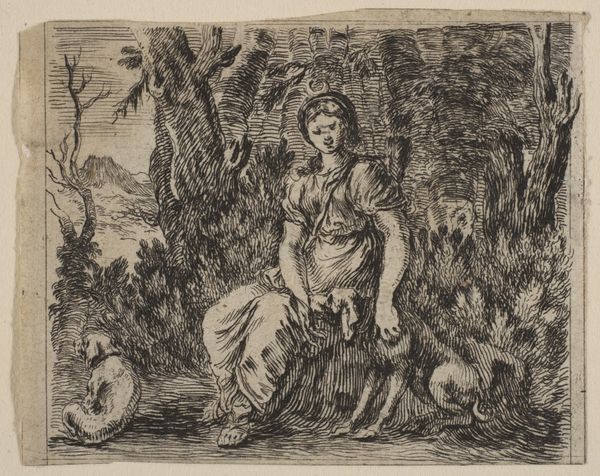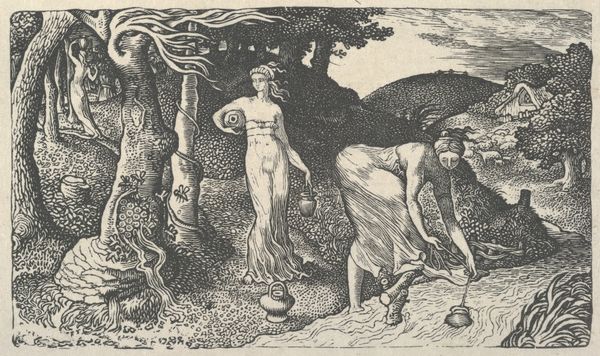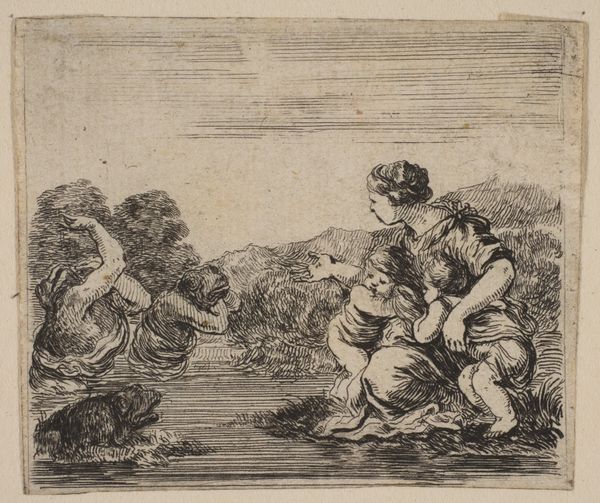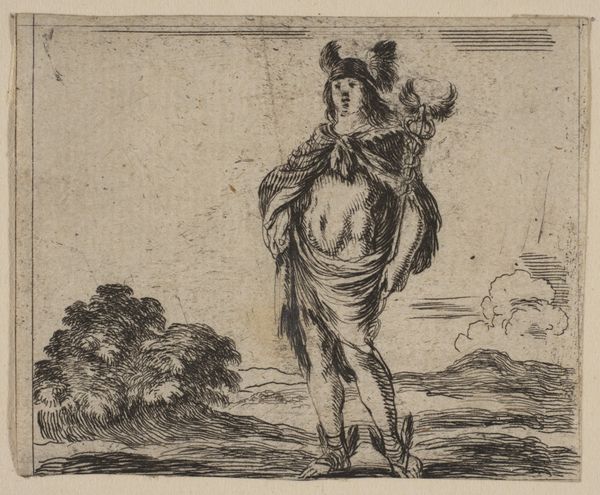
Jupiter and Callisto, from 'Game of Mythology' (Jeu de la Mythologie) 1644
0:00
0:00
drawing, print, etching
#
drawing
#
narrative-art
#
baroque
# print
#
etching
#
figuration
#
mythology
#
history-painting
Dimensions: Sheet: 1 13/16 × 2 3/16 in. (4.6 × 5.5 cm)
Copyright: Public Domain
Curator: Here we have Stefano della Bella’s "Jupiter and Callisto," a 1644 etching which is part of his "Game of Mythology" series, currently housed at the Metropolitan Museum. The print depicts a scene of supposed comradery, though the myth behind it hints at so much more. Editor: It's a striking image. There’s a curious density in the etched lines that conveys a nervous tension. It almost makes the landscape appear unstable, reflecting perhaps the unease inherent in the subject matter. The materiality, in this case etching, really emphasizes this instability of a fable. Curator: Absolutely. Consider the context: Della Bella was working during a period when mythological prints were gaining popularity among collectors, acting almost as visual aids for the aristocratic class to educate themselves. It showcases his mastery in translating classical stories into digestible imagery for consumption. What is particularly interesting here is that it isn't just the high artistic merit of the print, but how accessible it made the myth and social customs of the time. Editor: And that’s intriguing because etching itself, being a relatively reproducible and affordable medium, made narratives like this far more accessible than, say, an oil painting commissioned by the elite. There’s a certain democratizing force in the medium. We often discuss Jupiter’s actions as almost solely based on his individual lust but what about the power structures that allow him to abuse his authority? What kind of workshops were making these fables widespread to teach this acceptance? The fine line-work and repetitive processes reflect a broader system. Curator: Precisely. These prints helped to solidify those social hierarchies and expectations and the museum contextualizes them, allowing visitors to understand not just the story, but its reception and impact on the period's sensibilities. Della Bella's print contributed, in its own small way, to reinforcing prevailing power structures, while simultaneously catering to popular tastes for classical narratives. Editor: Looking at the material properties – the ink, the paper, the repeatable marks of the etching needle, it really underscores this industrial spread of ideas. Each print functions as a testament of material dissemination of cultural beliefs that shaped our social landscape and gender roles, reflecting the intersection of labor and societal conditioning of both men and women. Curator: The beauty of viewing a piece like this through our respective lenses allows us to appreciate both the artist’s skill and its complex relationship within a particular social framework. It also highlights the public responsibility of museums to unpack this history. Editor: Exactly! The image of Callisto can speak to both art history and material engagement. The production of the object speaks to so many more people that it depicts.
Comments
No comments
Be the first to comment and join the conversation on the ultimate creative platform.
